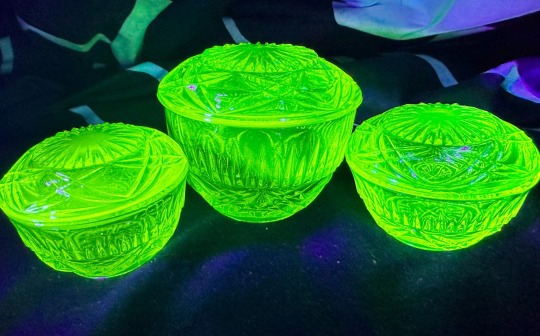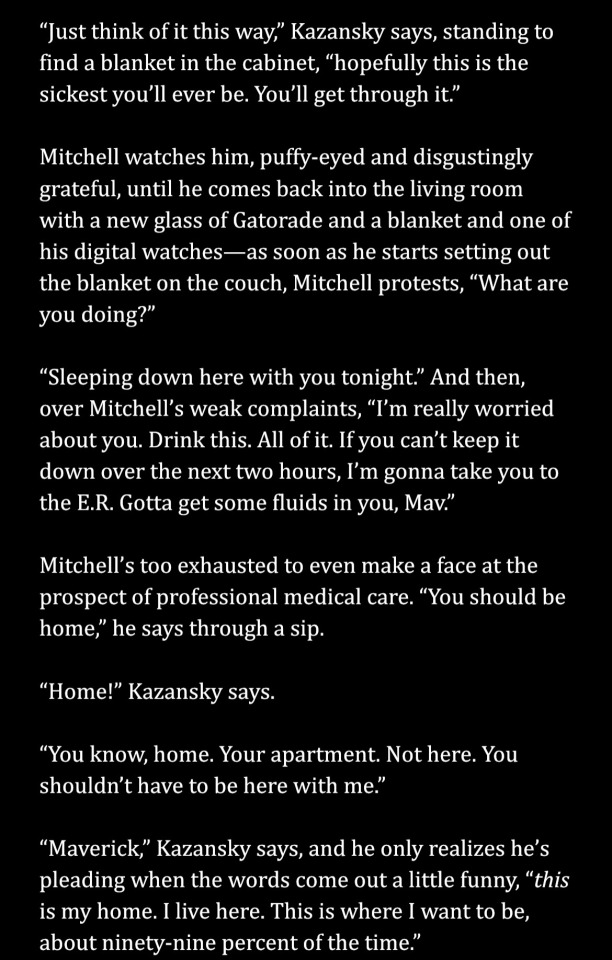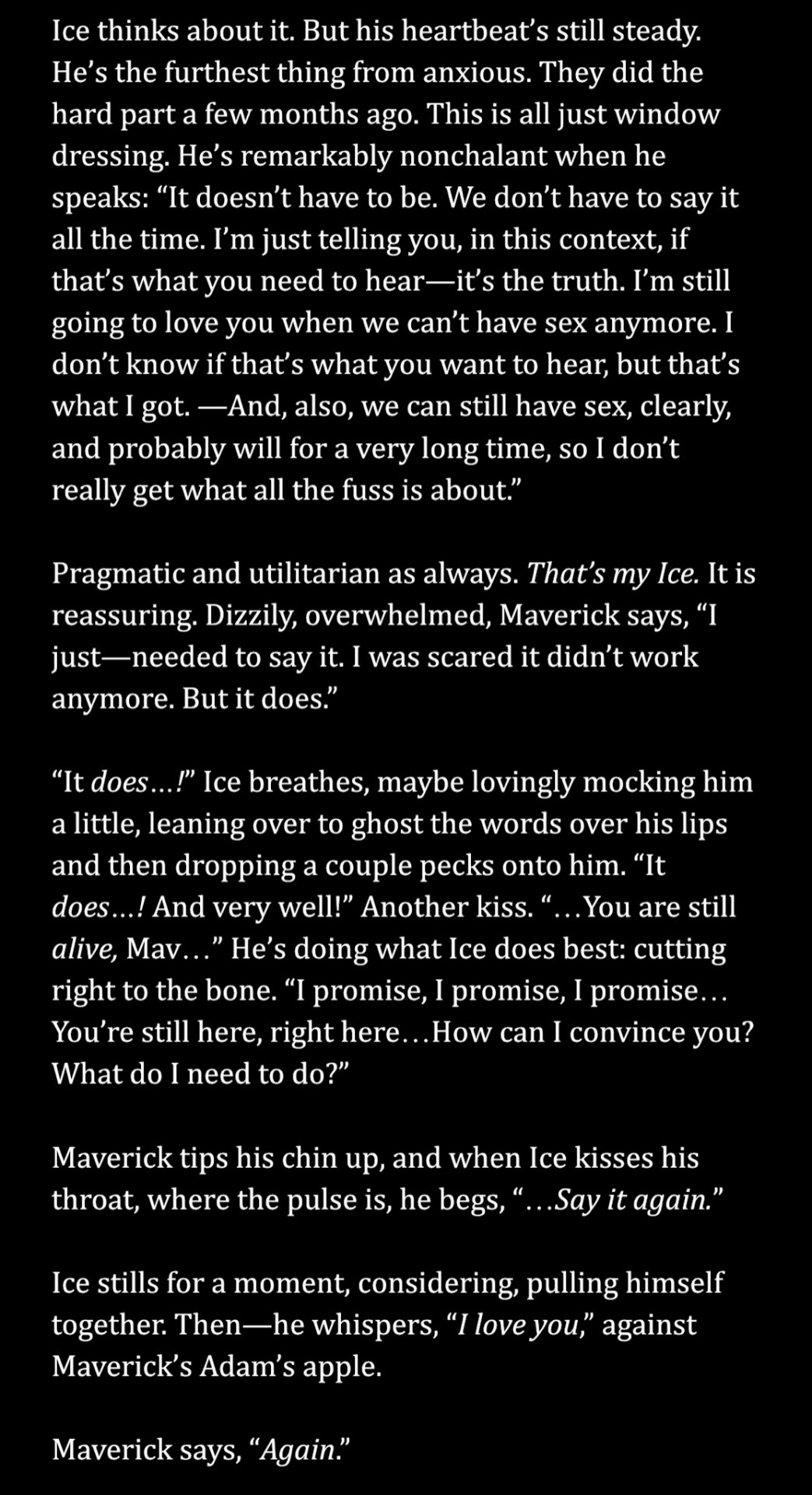#uranium mine
Text

Uranium mine by Drimogemon26 January 3, 2012
#Drimogemon26#uranium#mining#mine shaft#mines#uranium mine#wiki#Wikipedia#tunnel#tunnels#underground#curators on tumblr#curators
4 notes
·
View notes
Text
youtube
1 note
·
View note
Text
Excerpt from this story from Grist:
Earlier this year, Arizona lawmakers sued the Biden administration over the newly created Baaj Nwaavjo I’tah Kukveni — Ancestral Footprints of the Grand Canyon National Monument — arguing that the establishment of national monuments should be state matters and calling the move a “land grab.” Now, the Hopi, Havasupai, and Navajo Nation, whose ancestral lands overlap with the national monument, have intervened in the case and joined with the federal government to protect the area.
“Even if the Tribal Nations and federal government share similar goals and legal positions in this litigation, the United States cannot adequately represent the Tribal Nations’ sovereign interest,” the tribes’ intervention stated.
The nearly one-million acre national monument protects areas tribes called home before being forcibly removed by the federal government, as well as places where tribal citizens hunt, pray, and gather foods and medicines. The area is also important for wildlife migration routes and potential burial sites.
If successful, Arizona’s lawsuit would open Baaj Nwaavjo I’tah Kukveni to more economic development, and specifically, livestock grazing and uranium mining. Currently, there is only one uranium mine in operation within the boundaries of the national monument. The lawsuit argues that limiting mining of uranium around the Grand Canyon will make the U.S. more dependent on acquiring it from foreign countries for energy purposes.
Arizona’s lawsuit is focused specifically on the Antiquities Act. Passed in 1906 to protect areas of scientific and historical significance, President Biden used the act to create Baaj Nwaavjo I’tah Kukveni after decades of Indigenous advocacy focused on protecting the Grand Canyon from uranium mining. According to Arizona, the national monument ties up too much land, impacting revenue generation that could affect funding for schools as well as the economies of small towns in the area who have also joined in the suit against the federal government.
#Arizona#Grand Canyon#uranium mining#Baaj Nwaavjo I’tah Kukveni#Baaj Nwaavjo I’tah Kukveni — Ancestral Footprints of the Grand Canyon National Monument
803 notes
·
View notes
Text
"In a major win for the traditional owners of Australia, the federal government has ordered the end of the land leasing program for the Jabiluka uranium deposit, ensuring that mining will never occur on the land owned by the Mirarr people.
At the same time, Prime Minister Anthony Albanese and his coalition added it to the nearby Kakadu National Park, a UNESCO Natural Heritage Site twice the size of Yellowstone.
Various parties to the disagreement over the destiny of Jabiluka described the decision as “a great day for the Mirarr people, for Kakadu, the Northern Territory, and for Australia,” “a genuine and welcome surprise,” and “a reminder of the extraordinary privilege all of us have, to share this continent with the world’s oldest continuous culture.”
The dispute over Jabiluka dates back to 1991, when traditional owners, environmental groups, peace activists, and others protested the granting of a lease for Jabiluka to Energy Resources Australia (ERA) majority-owned by the Australian mining giant Rio Tinto Group.
Located in the Northern Territories, activism by Indigenous owners like the Mirarr and Djot has forced successive administrations to defer or avoid the actual development of the potential mine. This included a road blockade in 1998 during which 500 people were arrested.
The Jabiluka Long-Term Care and Maintenance Agreement signed in February 2005 gave the traditional owners veto rights over the future development of Jabiluka.
Key details about the history of Jabiluka to understand are that the land has been under mining leases for over 30 years, but they’ve never been developed. ERA was not seeking to renew the 10-year lease to try and push forward with uranium mining, as they acknowledge the traditional custodians of the land have the ultimate say as per the 2005 agreement.
ERA stated they sought renewal of the lease in order to secure the asset should the traditional owners ever change their minds. Jabiluka is one of the world’s richest and most extensive uranium deposits ever located.
In 1991, PM Bob Hawke declined to exploit the mine’s riches, as did the Gillard Administration in 2013, but with Rio Tinto and ERA never forsaking the mine as a lost cause, and the Albanese government planning to move forward with nuclear power expansion, the Mirarr and others felt that another, hopefully final push was necessary.
As a result, the federal government provided recommendations to the state government of NT that the will of the people should be respected, and that the lease should not be renewed.
“[It] means there will never be mining at Jabiluka,” Mr. Albanese was quoted as saying last Saturday. “This beautiful part of Australia is home to some of the oldest rock art in the world, a reminder of the extraordinary privilege all of us have, to share this continent with the world’s oldest continuous culture.” ...
Officials from the NT government said the decision was made based on the recommendations from the Coalition government in Sydney, saying that Federal Resources Minister Madeleine King advised that the most important position to respect was that of the Mirarr."
-via Good News Network, July 31, 2024
#reminder that there is no true environmental justice in a world that uses nuclear power#because of the horrifyingly massive and ongoing harms to primarily indigenous communities#australia#aboriginal#first nations#indigenous#indigenous activism#uranium#uranium mining#environmental justice#mining#national parks#mirarr
602 notes
·
View notes
Text
why are geiger counters so cute. they are like little animals to me. making cute little noises when they detect radiation.
#mine#shitpost#geiger counter#radiation#radium#uranium#uranium glass#little animals#cute aggression#they are cats to me
2K notes
·
View notes
Text


via mrs.fallout on instagram
101 notes
·
View notes
Text
Uranium Mine Leased for Years Becomes Part of National Park in Historic Win for Native Activists https://www.goodnewsnetwork.org/uranium-mine-leased-for-years-becomes-part-of-national-park-in-historic-win-for-native-activists/
In a major win for the traditional owners of Australia, the federal government has ordered the end of the land leasing program for the Jabiluka uranium deposit, ensuring that mining will never occur on the land owned by the Mirarr people.
#good news#environmentalism#indigenous activism#native rights#environment#nature#uranium#uranium mines#national parks#keep it in the ground#australia#aboriginal peoples#mirarr people
56 notes
·
View notes
Text

Seventy-five years after two nuclear bombs were dropped on Japan — killing hundreds of thousands of people in the cities of Hiroshima and Nagasaki — one small community in the Northwest Territories is still haunted by its connection to the blasts. Across Great Bear Lake from the 533-person hamlet of Délı̨nę sits the historic mining site of Port Radium. [...] [T]he Canadian government quietly called for uranium production as part of the country's involvement in the Manhattan Project. That uranium was sent south to help the United States with the race to build a nuclear bomb. [...] [N]ear Great Bear Lake, workers would eventually wonder about the risks they took delivering sacks of ore on their backs as they sent it south — without being told what they were about to be complicit in. [...] Days after the blasts, the Canadian government announced the country's role in the explosions, citing the Great Bear Lake mine's uranium as a key ingredient for the project, said Geoffrey Bird, a professor at Royal Roads University in Victoria who studies tourism and the history of remembrance. An English-language sign connecting Port Radium to the atomic bomb was photographed in Délı̨nę in December 1945. [...] While the Canadian government hasn't apologized to Délı̨nę, the community has apologized to Japan. [...] Locals in Délı̨nę say many ore workers and their family members developed cancer later in life. [...] In the book If Only We Had Known, which tells the story of Port Radium from the eyes of the Sahtúot'ine, elders remember workers' clothing covered with dust, windy days when ore was caught up in the air and children playing games in mine tailings.
Text by: Katie Toth. “Spectre of atomic bomb still looms over N.W.T. community 75 years after Hiroshima.” CBC News. 5 August 2020.
---
[O]n 6 August 1998, 10 members of the small Sahtugot’ine Dene community of Deline (Fort Franklin) in the ‘Northwest Territories’ apologized in Hiroshima for the atomic destruction of that city – and the death of over 200,000 civilians – exactly 53 years earlier [...]. Eldorado Gold Mines Ltd. [was] placed under state control during World War Two. They [the Dene] were allowed only to help it [uranium] on its long and winding way, 3,000 miles by river, lake, road and air, from Port Radium on Great Bear Lake to Port Hope on Lake Ontario, where, from 1942-45, the suddenly precious ore – the ‘new gold’ of the atomic age – was, together with ‘Belgian’ uranium from the Congo, refined and dispatched to Los Alamos, the desert lab in New Mexico secretly building the new, city-smashing Superweapon. [...] Beginning in the 1970s, and spiking sharply in the 1980s, many of the men who had handled and carried the ore – and the men who had mined it – began to die from cancer [...]. The “Dene,” the CBC ‘revealed,’ “were never told of the health hazards they faced, even though the government knew … as early as 1932 that precautions should be taken in handling radioactive materials”. Instead [...] “workers [were] dressed in casual clothes and uranium dust [...] covered the men like flour.” [...] [A]s detailed in a December 1998 article [...] in First Nations Drum: [...] [T]he mine was kept running at a very high pace [...]. The Dene were employed as ‘coolies’ packing 45-kilogram sacks of radioactive ore for three dollars a day, working 12 hours a day, six days a week. This at a time when the ore was worth over $70,000 a gram. [...] In 1998, the Déline Dene Band Uranium Committee released a 160-page [...] report, “They Never Told Us These Things.” In a 2011 article in Maisonneuve, Salverson recounts a community meeting in Deline to discuss the report, “where [non-Dene] lawyers delivered a year’s worth of uranium-impact research from the archives in Ottawa,” revealing that in “the mountain of papers we dug up … there is not one mention of the Dene, your people.”
Text by: Sean Howard. “Canada’s Uranium Highway: Victims and Perpetrators.” Cape Breton Spectator. 7 August 2019.
#because of the movie about oppo and making of the bomb#port radium ultimately mined over 13 million pounds of uranium#ecology#landscape#abolition#colonial#imperial
185 notes
·
View notes
Text
Ok fine, I'll bite. Anyone know any Fallout (4) Discord servers to chill in. I Am Yearning For The Uranium Mines.
#Mine#Fallout#Fallout 4#FO4#F04#uranium fever has done and got me down.........#i need more ppl to yap to abt nick valentine you see
18 notes
·
View notes
Text
I think the rtc community really needs to talk about the themes & messaging of rtc more like HUH??? WHYS THAT SO SLEPT ON???
Like after I watched it with my parents we were just talking about the message & themeing for like an hour and. It really makes me think a lot.
I'm serious. It's a nice thing to keep in mind & depending on how you interpret it, it can genuinely bring a little more hope into how you think about things. What I mean is–
Is how we don't know what's going to happen in life. We can't predict anything. That was the entire point of the Cyclone — nobody knew it was going to happen. You've gotta appreciate what you have while you have it. Even if you've had a lot of bad things happen, and it seems like it's just getting worse? You don't know that for sure!! You can't predict what's going to happen in the future. Maybe something good CAN happen. There's no shame in being happy where you are right now. There is so much to be said about how easy it is to go through the motions of life without taking a moment to appreciate what's around you. life certainly can be wonderful, you just have to take a look around.
It's a good message to keep in mind. :]
I may not have been into the Uranium Teen Scream Trilogy for very long(the hyperfix has been going strong for about 3-4 months now🫡), but I absolutely love the themeing & messaging and how it's clicked with so many people from its rather recent uprise in popularity. There are like. Whole entire articles about WHY it's clicked & gained more traction as of recent years. It's awesome
#watermelons talks#also why be safe be good + sugar cloud/jawbreaker + its not a game/its just a ride make me bawl every time#MB CHAT I. REALLY WANTED TO YAP ABOUT THIS#I NEVER SEE ANYBODY TALK ABOUT IT#plus all the characters really clicked with me#like. they just. feel real to an extent even with how some traits are exaggerated(which is common in media to get traits across ykyk)#they feel like people i wouldve known#HELL THEY ARE LIKE PEOPLE I KNOW/pos#i love the Uranium Teen Scream Trilogy sm its become a major comfort media of mine and has genuinely made me appreciate things a bit more#UTST is my roman empire but in an amazinf way#ride the cyclone#rtc#ride the cyclone musical#legoland#legoland play#legoland musical#uranium teen scream trilogy#jacob richmond#brooke maxwell
23 notes
·
View notes
Text



Recent additions to the collection 💚☢️💚
(Already posted this photo of me but wanted another UG post) 😎
#uraniumglasscollector#uranium#glass#radioactive#radiation#nuclear#radioactivity#girl#me#mine#antique#fallout#aesthetic#vintage#retro#alt girl#green
22 notes
·
View notes
Text







Sunday, 9.15.24
MIL babysat for a few hours this afternoon and I was finally able to clean up the disaster of a room that is the (currently unused) nursery/my craft space, and set up a work station for myself. I am very creatively motivated right now and I have some exciting projects in the works.
Photos also feature the home of my 19 year old chilean rose hair tarantula, Neko. I really need to get a separate table/shelf for her so I can have more workspace, but this is fine for now.
You can sort of see the new piece of uranium glass I acquired. It’s called a “flower frog,” and was used to sit atop a vase and hold flowers in place. I managed to get it for a ridiculously low price on Facebook marketplace. It triggers my trypophobia in the best possible way. 🥲 It brings to mind, perhaps because of the name, the (trypophobia trigger warning) Surinam toad. I have some cool plans for it.
#personal journal#witchblr#vulture culture#trypophobia#uranium glass#curiosities#taxidermy#art#oddities#nature#skull display#mine#preserved plants
10 notes
·
View notes
Text

Excerpt from this story from Inside Climate News:
The Navajo Nation doesn’t allow radioactive uranium ore to be transported through its lands without permission, but that’s exactly what a mining company began doing this week on roads administered by the state—which has no such restrictions.
Navajo Nation President Buu Nygren told tribal police to stop the trucks, and he issued an executive order Wednesday that called for the company to negotiate a hauling agreement with the tribe before any other trucks enter Navajo land. First Lady Jasmine Blackwater-Nygren announced a “No Illegal Uranium Hauling” walk along part of the transportation route in Cameron. Arizona Gov. Katie Hobbs, under pressure for months from tribes and environmental advocates over the situation, subsequently brokered a deal with the company to hit pause.
In a Thursday night call, Hobbs told Nygren that shipments would halt until the company—Energy Fuels Resources—and the Navajo Nation hold discussions about safety concerns.
While Nygren is glad the governor acted, he wants to know how long transportation activities will stop.
“I don’t know what temporary hold means on the governor’s side,” Nygren said in an interview after the walk, held Friday morning. “Does that mean five days? Does that mean 10 days? Does that mean a month? … I hope temporary means six months, aligning with my executive order, so that we can have those discussions.”
Asked by Inside Climate News about timing, a Hobbs spokesperson said, “At this moment, there’s no additional information on when the end date will be.”
Energy Fuels Resources, the owner of Pinyon Plain Mine in Arizona and White Mesa Mill in Utah, confirmed it started hauling ore from one site to the other on Tuesday. In a statement issued before the agreement to pause that work, the company said this transportation is “safe and legal” and “in accordance with all applicable laws and regulations.”
State law doesn’t bar that transport, but a Navajo law enacted in 2012 does. The situation cuts to the heart of U.S. history with Indigenous people: Treaty agreements that acknowledge tribal nations’ right to determine what happens on their lands are routinely ignored by states, companies and the federal government.
“Energy Fuels is subject to Navajo authority when accessing Navajo territory and can be excluded from Navajo territory for threatening the well-being of the Navajo People, although they likely claim they are beyond Navajo authority when on a state highway running through the Navajo reservation,” Gabe Galanda, an Indigenous rights attorney and the managing lawyer at Galanda Broadman, said in an email. “The state of Arizona may likewise claim regulatory power over a state highway running through the Navajo reservation but that assertion affronts Navajo inherent sovereignty and territorial control.”
305 notes
·
View notes
Text
Sign the petition in the article
Every uranium mine ever operated in the United States has required toxic waste cleanup. We can’t let destructive, toxic mining operations destroy this precious desert monument.
Bears Ears, named for twin buttes that resemble a bear’s head peeking over the horizon, is home to stunning red rock vistas, desert wildlife including coyotes and the threatened Mexican spotted owl, and ancient cliff dwellings and petroglyphs.
This place is priceless — but already, one site outside Bears Ears has become a “radioactive waste dump,” with more than 700 million pounds of toxic waste dumped there from past uranium projects.
Bears Ears was just recently restored to its rightful size after the Trump administration shrank its boundaries by 85% back in 2017. We can’t let it be put at risk again — especially not by new uranium mining right next door, which is devastating to land, water and air wherever it takes place.
The threat to Bears Ears
Atomic Minerals Corp. says it has a green light to drill 25 exploratory holes just outside Bears Ears in search of uranium. If the company finds uranium — and it likely will, given the “off the charts” radioactive rock revealed by old oil wells in the area — it’ll sell off claims to mine it.
What will that mean for this fragile desert ecosystem?
Open pits where topsoil has been ripped away to reveal ore. Chemicals pumped into the earth to dissolve uranium out of the surrounding rock. Radioactive waste left in pools when the mining and refining is done
46 notes
·
View notes
Text




wip wednesday: going thru my corny arc
#OKAY im back#sorry! working overtime pre paris airshow#i think I’m going to focus on this 80k of wips right now—just get them posted by the end of the summer#but u can keep sending in prompts if u want#and maybe someday I’ll actually be brave/creative enough to finish an AU#1. the frankly inevitable sickfic#2. this shit is so fucking corny but i literally can’t resist it anymore i just want them to say it all the time#3. have been slowly realizing lately that I’ve been slacking on how much the uranium mission probably fucked mav up#4. he is afraid of getting old & dying all over again#top gun#top gun maverick#pete maverick mitchell#tom iceman kazansky#icemav#top gun fanfiction#there’s so much thematic meat to be unpacked with ice’s cancer & eventual death#and I am sacrificing that thematic meat for my own mental health.#so you’re getting my analysis of mav’s death instead because i simply refuse to engage with an unhealthy ice#i know it’s wasted thematic potential & im sorry but i like 😭😭😭😭😭😭 cannot do it#we all have our little neuroses and ice’s death is mine#sorry I’m still in my ‘italicize dialogue to suggest surreality’ phase#i can literally track the very concrete ways my writing style has changed over the course of writing this series it RULES#progress!!!!!
99 notes
·
View notes